PR and content marketing both aim to strengthen a brand's visibility and reputation to support business growth. But in different ways.
They're two distinct marketing disciplines with unique tactics and metrics.
In this article, we’ll cover exactly what PR and content marketing are, the activities they include, and how to measure success.
Let’s start.
Content Marketing vs. PR: The Basics
Content Marketing Overview
Content marketing is a type of digital marketing that includes creating and sharing content to attract and engage a target audience.
This content isn’t as explicitly promotional as PR content. It provides high-quality information to meet the audience’s needs by answering their questions, helping them learn something new, and/or entertaining them.
Over time, this positions you as a trusted source. And can lead to business growth.
Because speaking to a specific audience is central to content marketing, it’s a good idea to use Semrush's One2Target to gain information about the people you want to reach.
Open the tool, add up to five competitors’ domains, and click "Analyze."
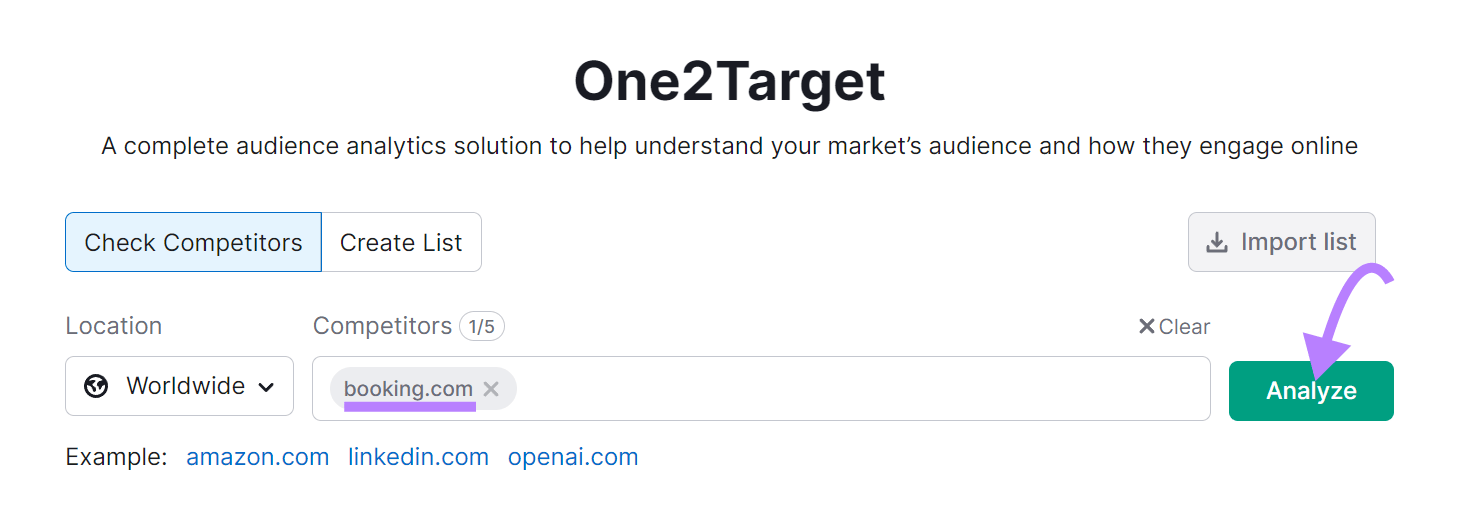
You'll see four reports:
- Demographics: Shows your audience’s age, gender, and location
- Socioeconomics: Shows your audience’s employment status, education level, household size, and income level
- Behavior: Shows your audience’s interests, device preferences, and social media use
- Audience Overlap: Shows how audiences overlap across competitors and which domains they visit
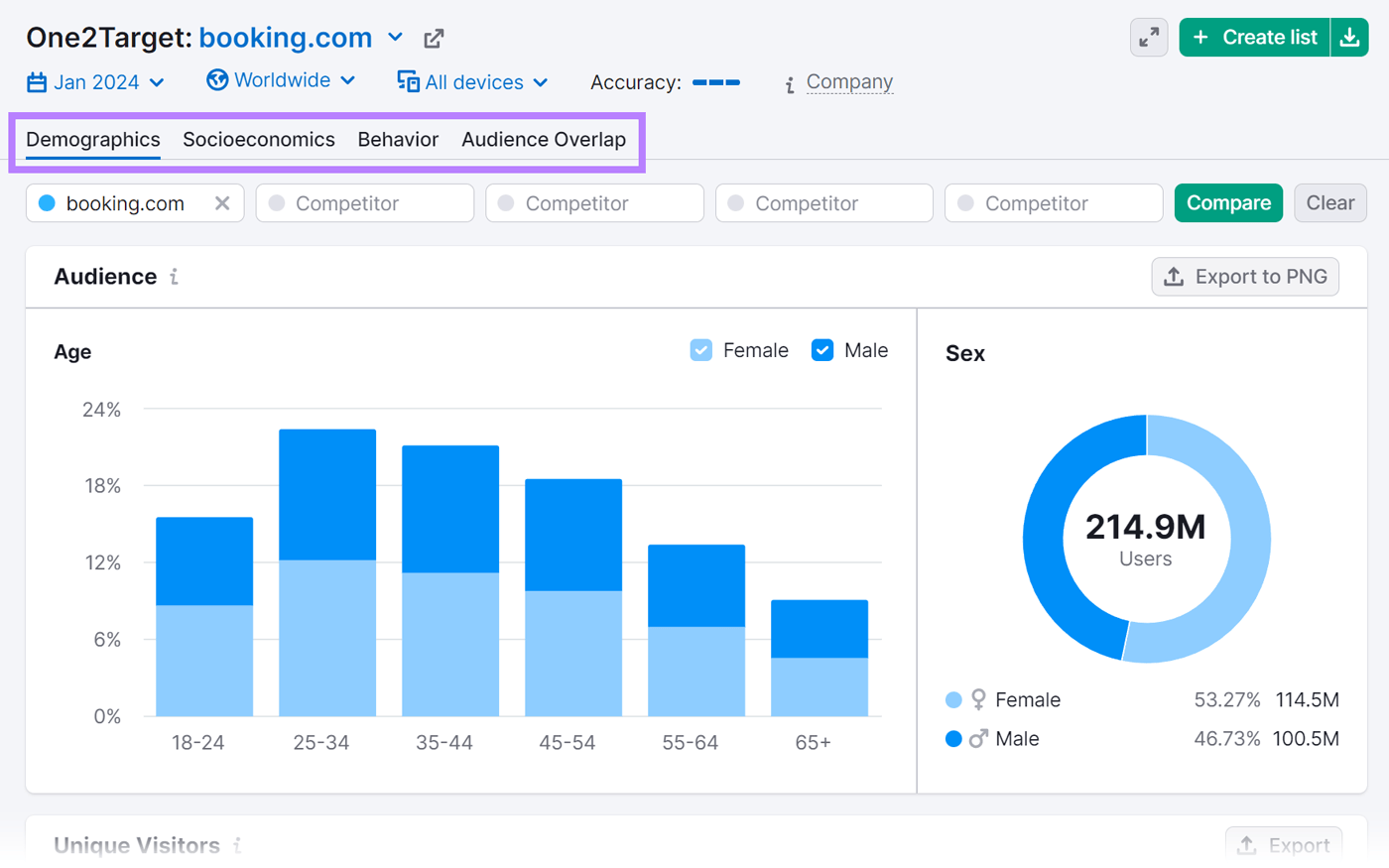
The insights you gain here can inform the content types you focus on and how you distribute it.
For example, if data shows your audience is primarily active on Instagram, focus on creating engaging Instagram posts and stories.
PR Overview
PR focuses on managing your company's public image. To get people to know, develop an affinity for, and trust your brand.
You do this by crafting stories and messages that positively influence how people view your business. Which can be focused on your products, services, overall brand, or even people within your company.
And PR typically involves engaging with journalists, organizing events, and handling crisis communications to ensure the company is seen favorably.
Like with content marketing, these efforts can lead to business growth over time.
Content Marketing vs. PR: Main Goals
Content Marketing Goals
Here are some of the main goals content marketing focuses on:
Boost Brand Awareness
You can enhance your brand’s visibility by consistently sharing high-quality content on different channels.
For example, sharing an insightful infographic on social media can increase brand awareness as your followers share it with their own networks.
At Semrush, we do this often. Here’s an example from LinkedIn:
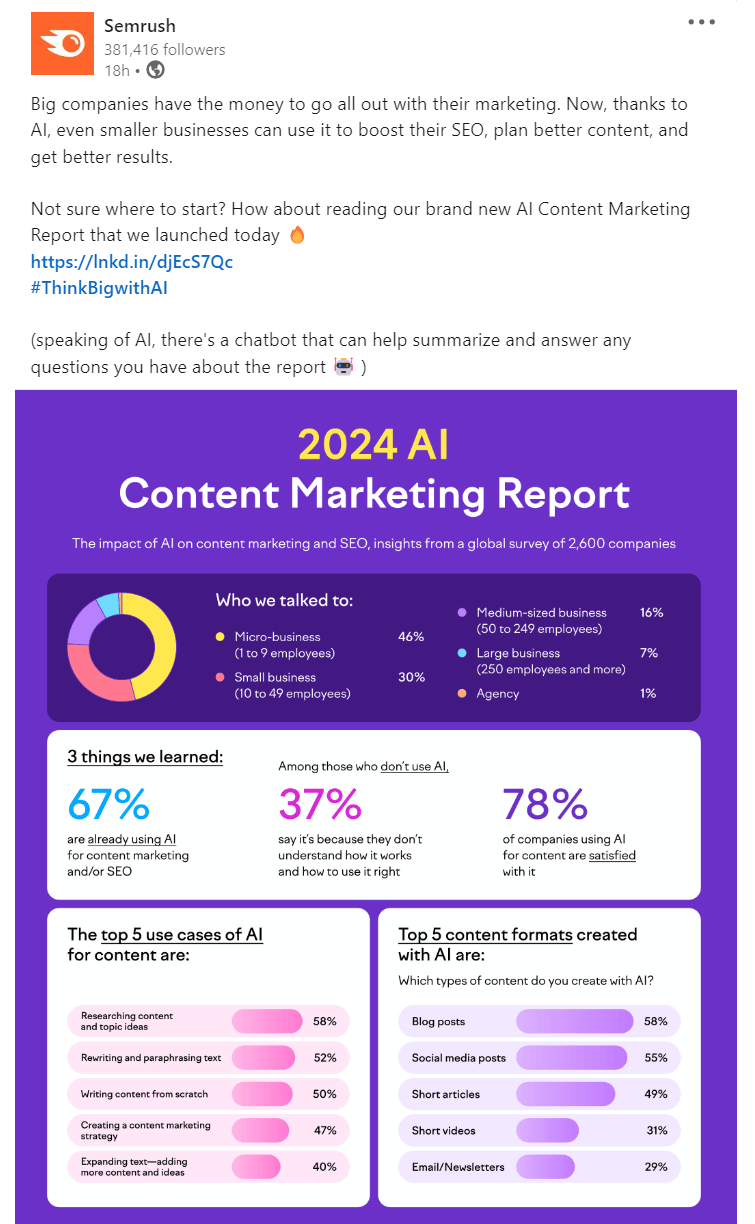
Publishing SEO-friendly content on your website is also valuable for increasing visibility. Because it can appear in search results and attract more organic (unpaid) traffic.
For example, here's a Shopify blog post that drew 201,300 organic visits in January 2024.
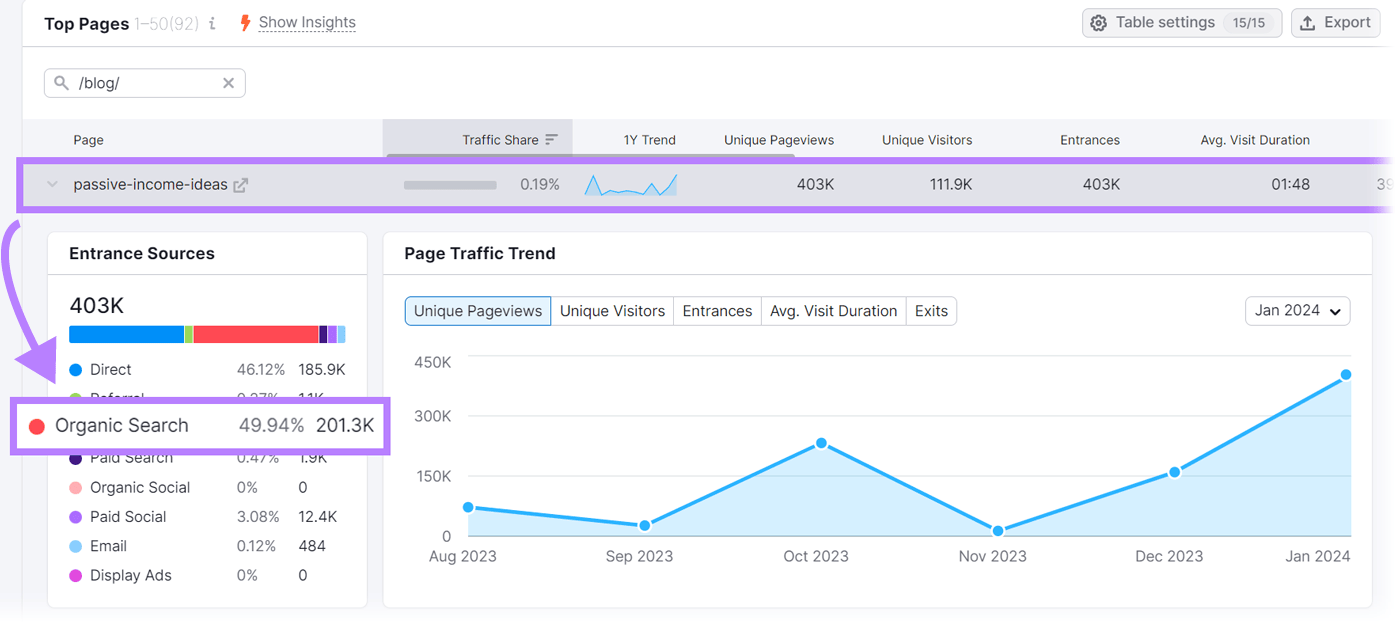
Generate Leads
Sparking audience interest through engaging content can translate to lead generation and potential sales.
How?
Users are willing to share their information (often by filling out a form) in exchange for a well-crafted guide or informative webinar. And they’re more likely to do so if they’ve regularly seen great content from you in the past.
Here’s an example of a downloadable guide that HubSpot uses to collect users’ email addresses and other details:
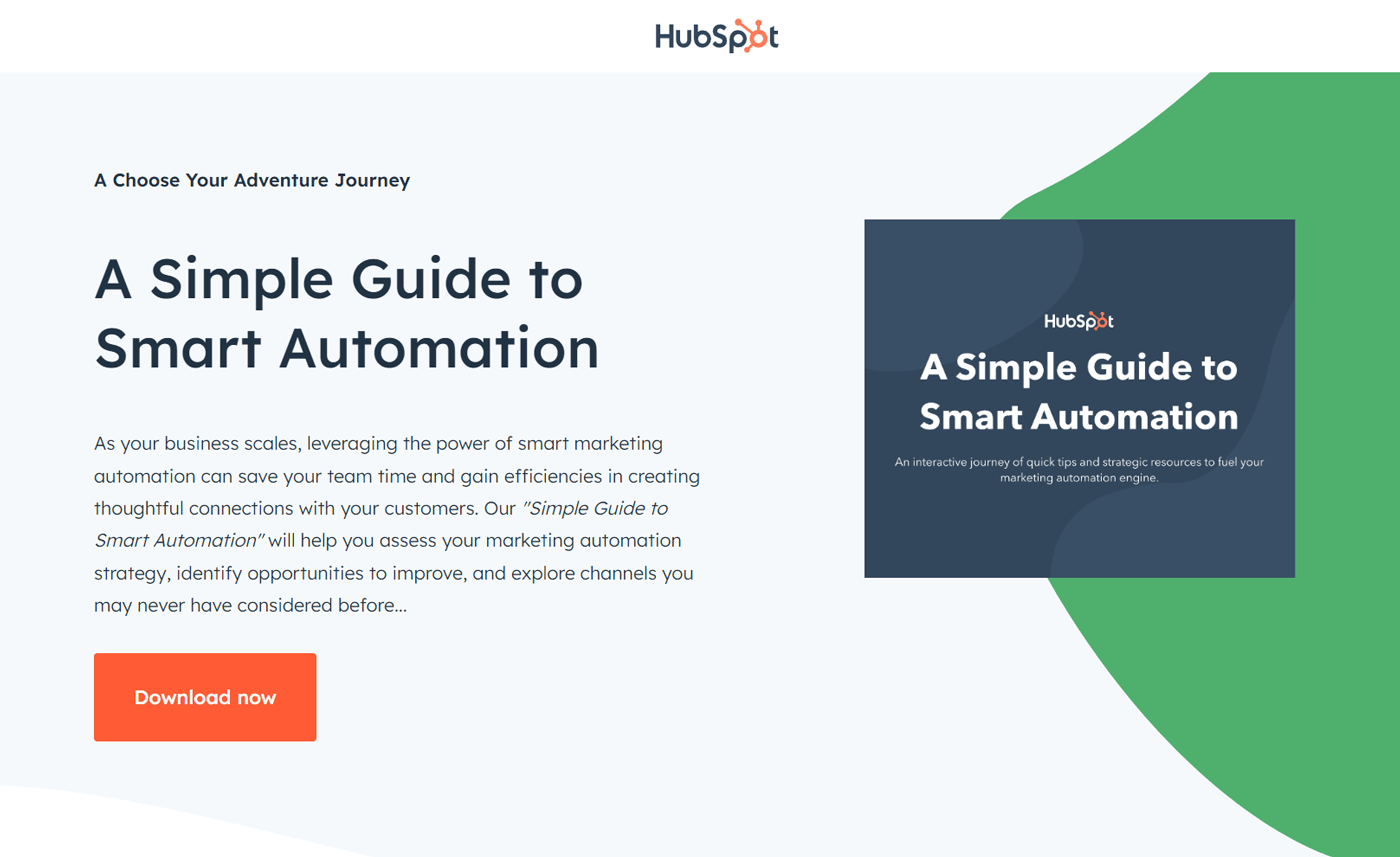
Depending on where users are in the buying journey, how familiar they are with your brand, and the type of content they’re viewing, they could even make a purchase.
Establish Authority
Sharing expert-created content helps position your brand as an authority in your field. Which builds credibility with your audience and can even improve your SEO performance.
For instance, publishing in-depth research reports establishes your brand as a reliable and trusted source of information among your audience. And aligns with Google’s recommendations on producing quality content that’s useful, reliable, and focused on people.
We regularly publish original research like this:
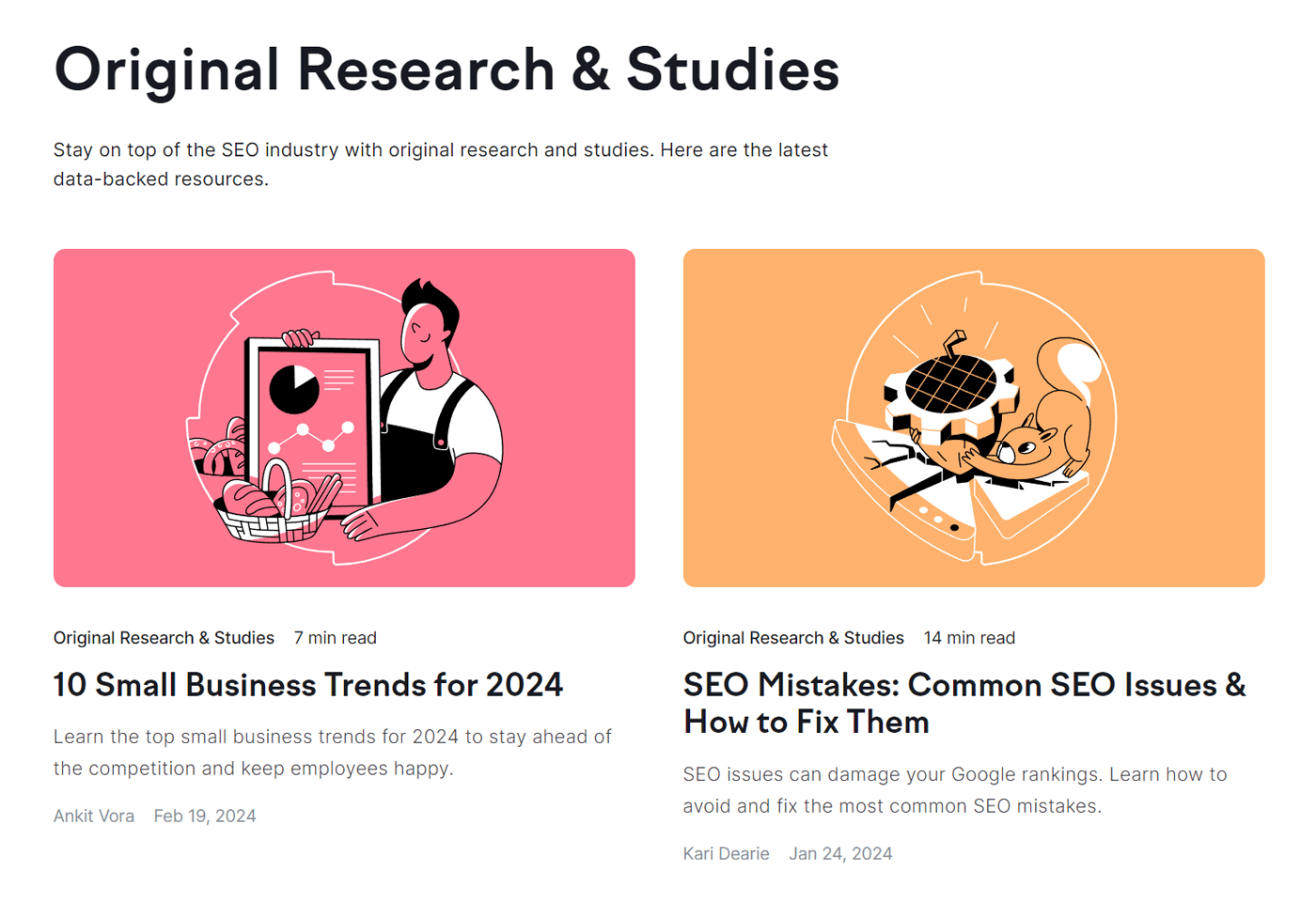
PR Goals
Now, let’s take a look at what you can achieve with effective PR:
Build Brand Awareness
Many PR activities are designed to attract attention from media outlets that can share news about your brand. Giving you more reach than you could achieve through your own channels.
For example, you could pitch a report on a survey you conducted to publications that might be interested. If one or more uses it as the basis for a story, it can be seen by audiences who might otherwise not have known about you.
Protect Brand Reputation
PR aims to create a favorable image for your company by highlighting successes and managing negative publicity.
For example, PR efforts can focus on promoting achievements like awards through various media channels. Like how RingCentral does it here:

And when something negative occurs (like a product recall), PR can mitigate any reputation damage.
This involves transparent communication with the public and stakeholders. And taking active steps to resolve the issue and restore the brand's image.
Content Marketing vs. PR: Typical Activities
Content Marketing Activities
Content marketing leverages different types of content and channels to achieve defined goals. Here are some of the most common:
Blog Posts
Blog posts help educate and engage your audience by answering their specific questions and addressing their pain points.
They also help with SEO—as long as it’s truly high-quality content.
Use Semrush's AI-powered SEO Writing Assistant to ensure your content aligns with what readers and search engines want to see.
Type, import, or generate content in the editor.
Then, enter at least two keywords, choose your target audience, and click "Get recommendations."
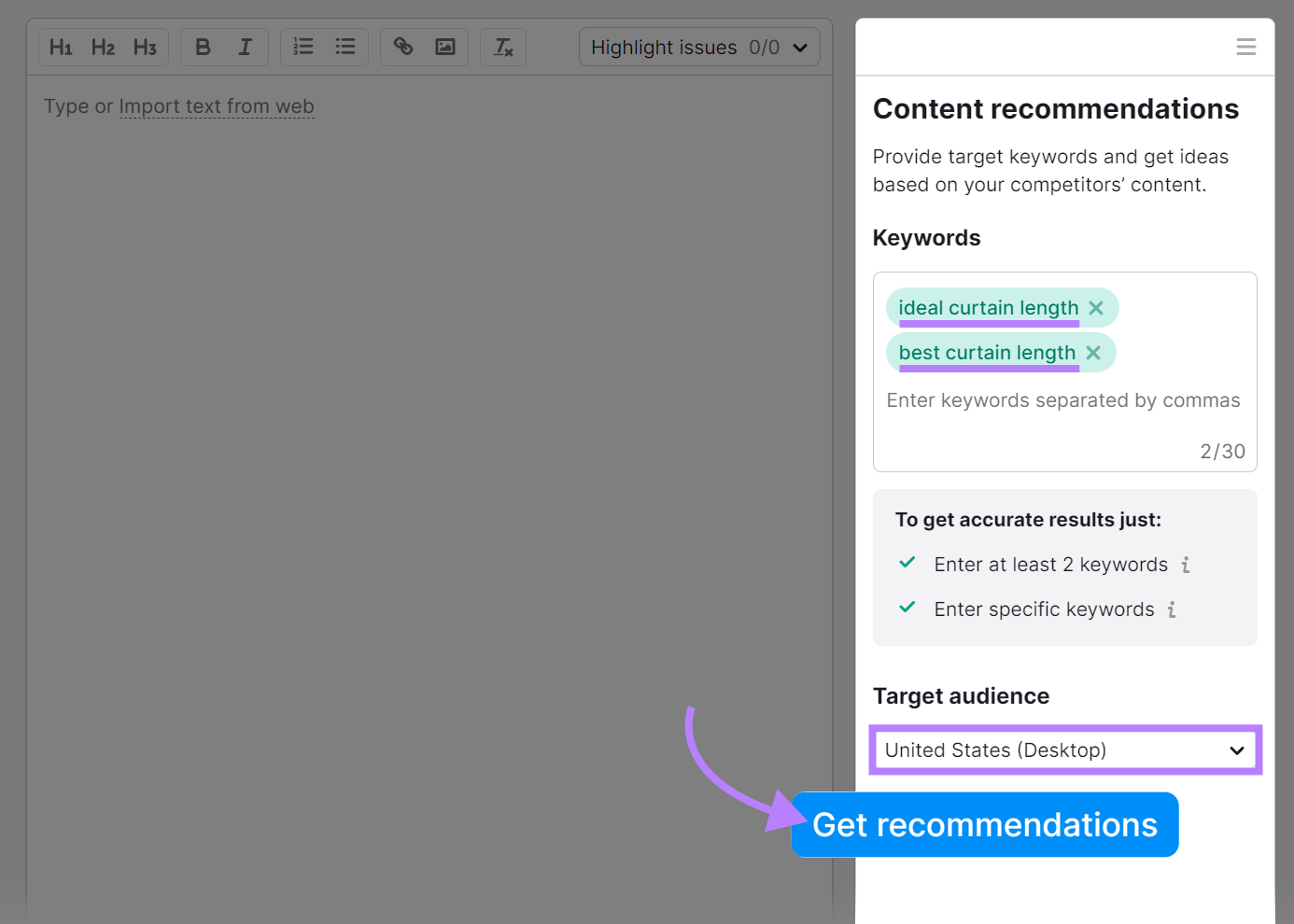
The tool will analyze your text. And give you a score based on SEO, readability, originality, and tone of voice.
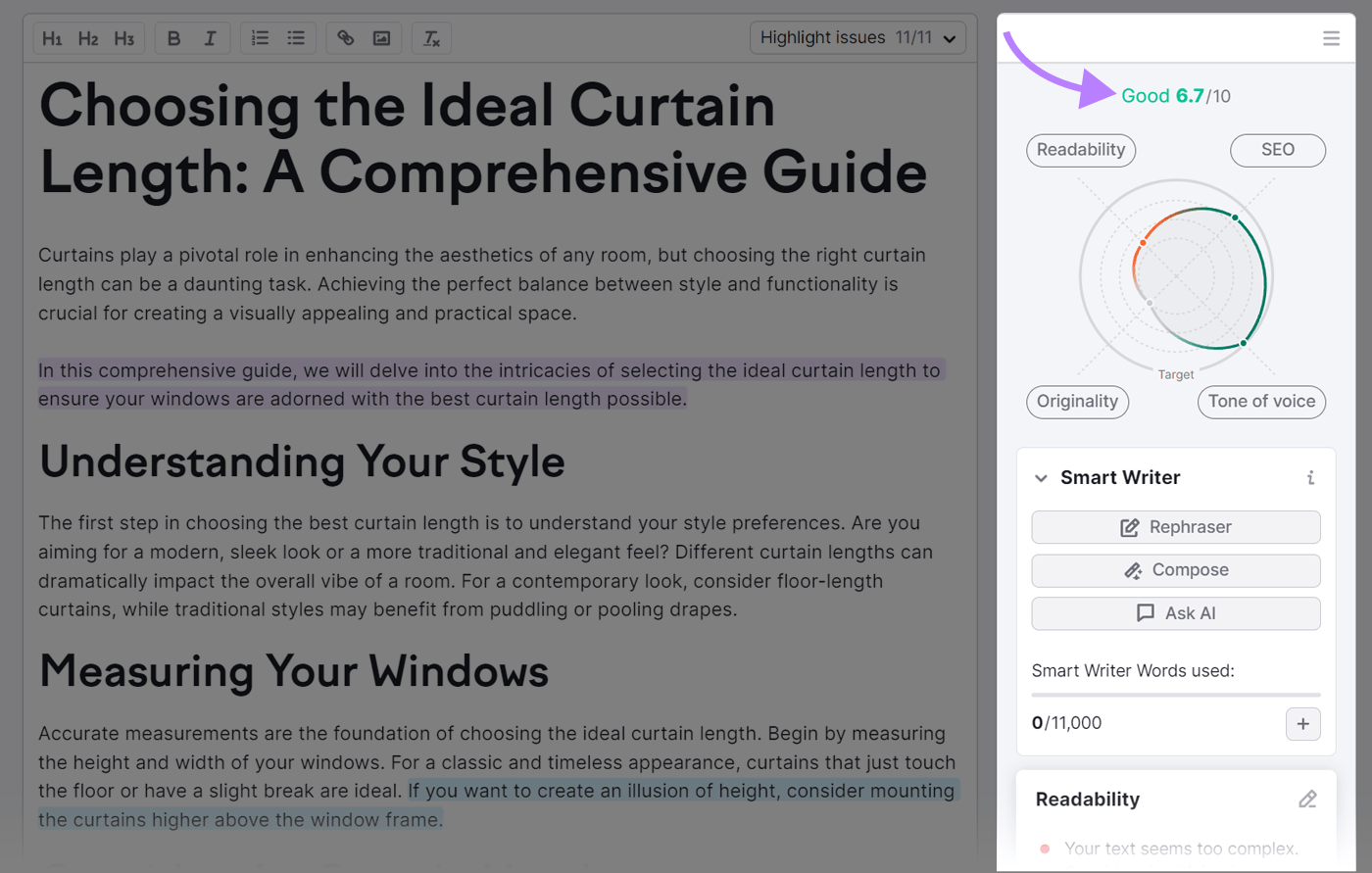
Click on the “SEO” button to see more information about how your content is doing from an SEO perspective.
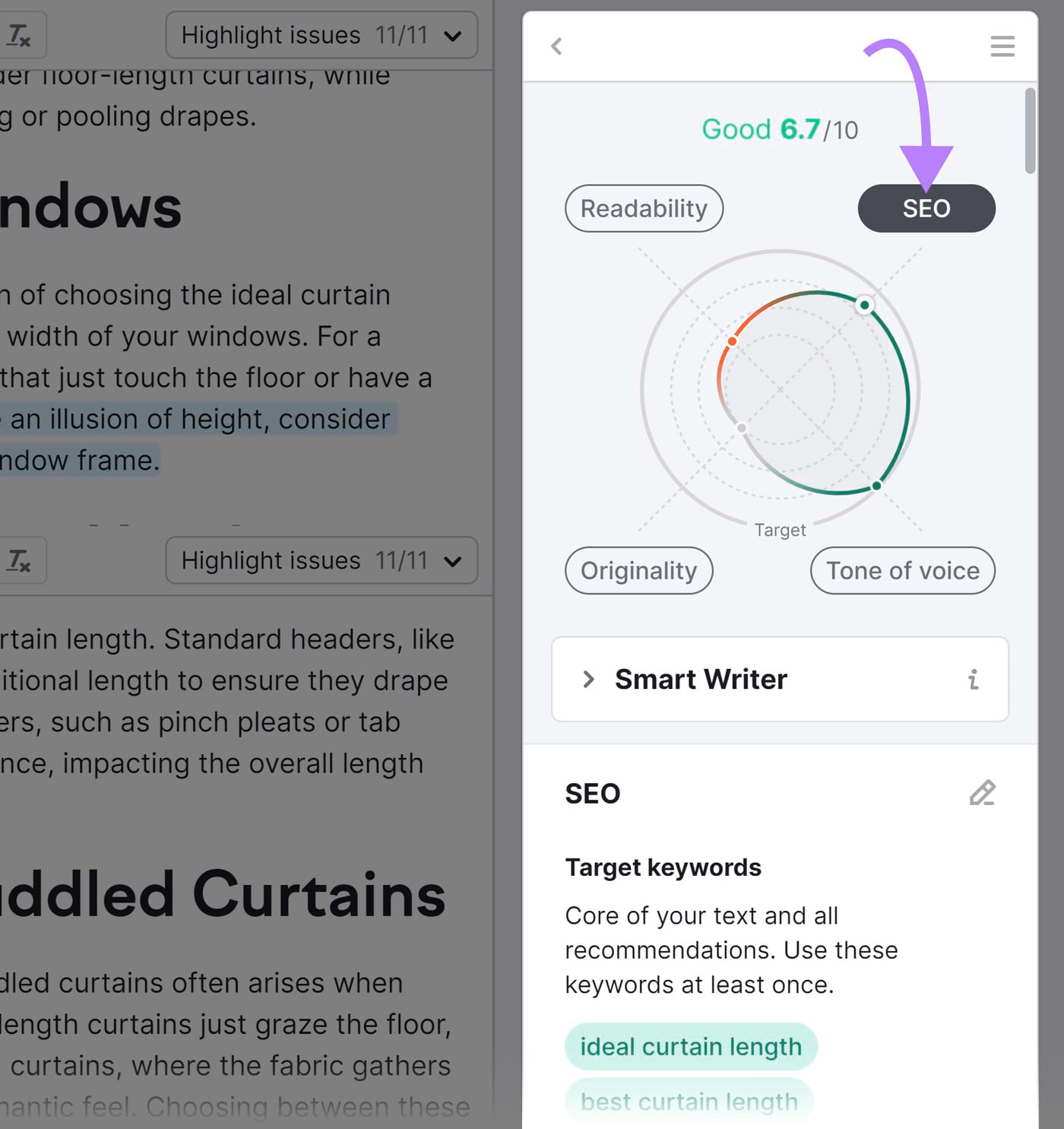
The tool provides recommendations about things like the number of links to include, how frequently to use your target keyword, and additional keywords you should include in the content.
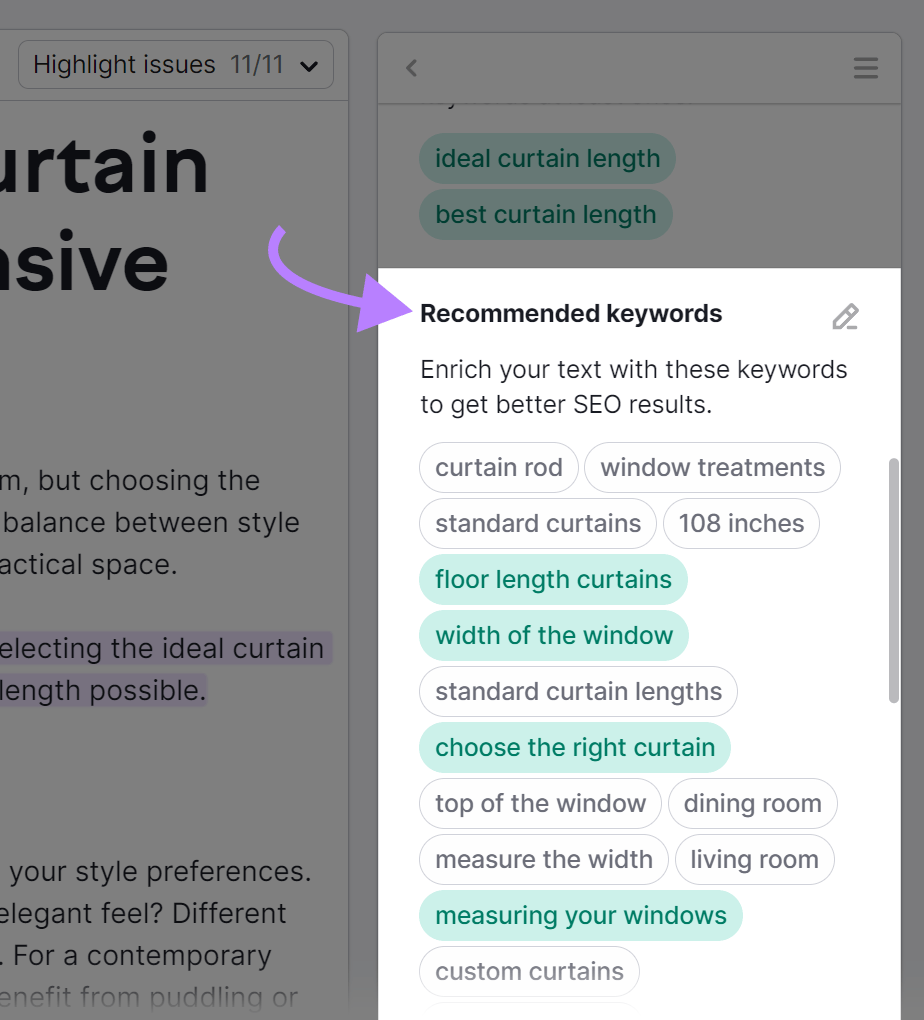
You can use these insights to publish search engine-friendly blog posts.
Videos
Videos can communicate complex topics in an easily digestible, engaging format.
In fact, 92% of global internet users watched online video content in Q3 2023, according to Statista.
This is why many brands now have their own YouTube channels where they talk about their products/services, industry, and related topics.
Like ConvertKit:
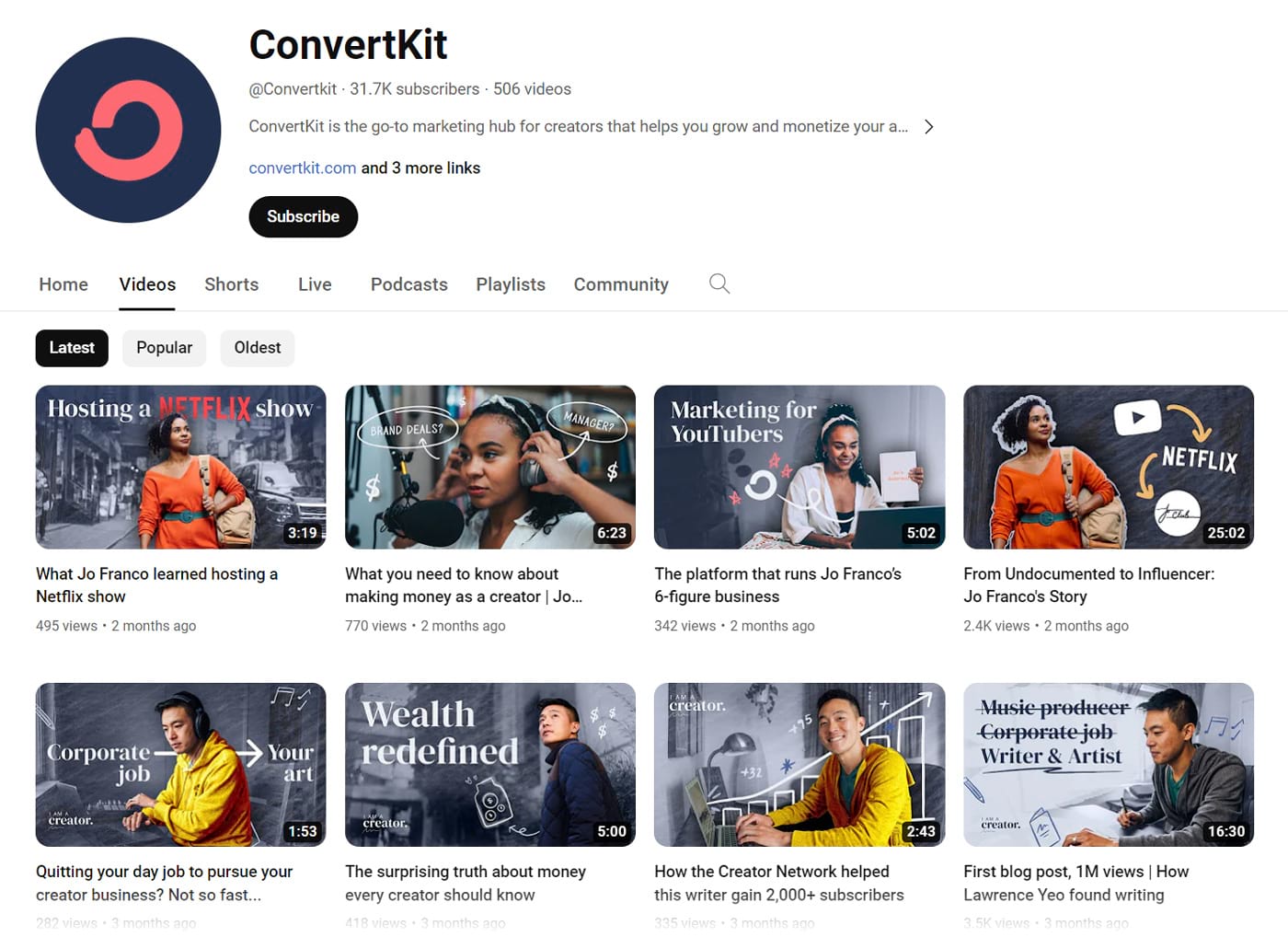
Email Campaigns
Emails let you reach your audience directly in their inboxes. Making them a highly personalized way to communicate.
You can provide updates and exclusive content to keep your audience engaged.
Here's an example of an email update from newsletter platform Beehiiv:
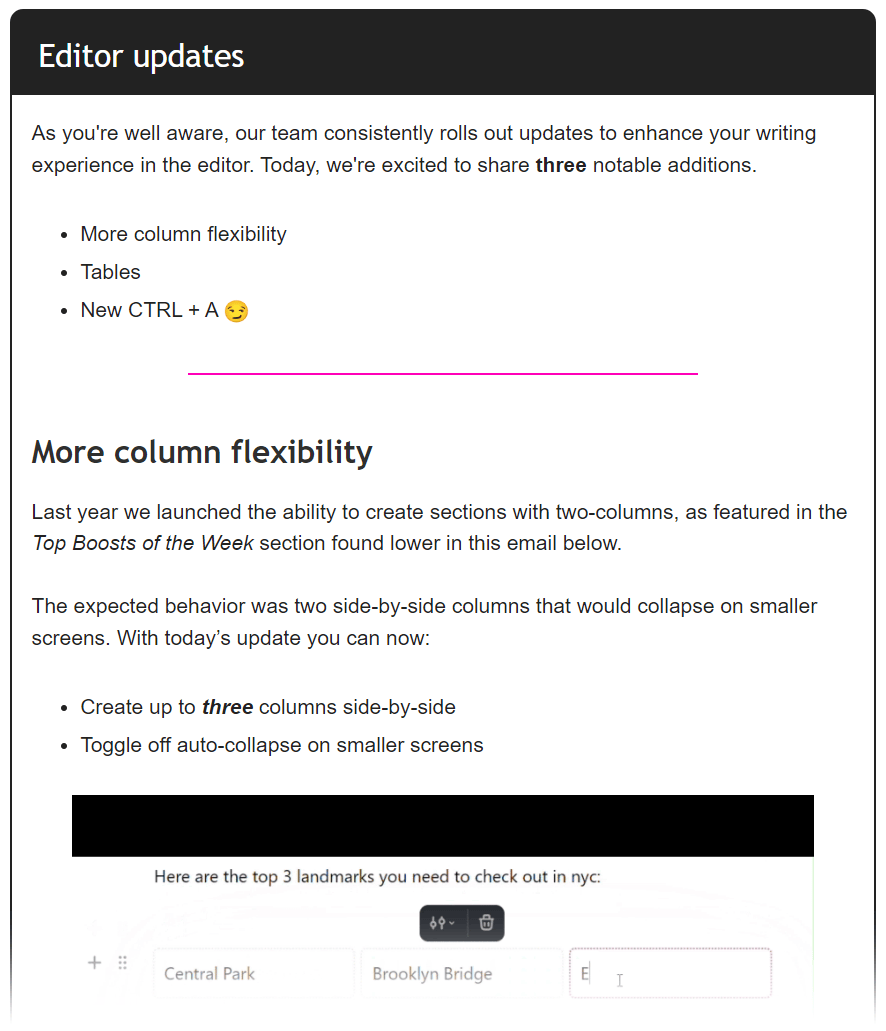
Further reading: How to Win People Over with Compelling Email Content
Guest Blogging
Guest blogging on relevant websites gets your brand name in front of a wider audience. And helps further build your industry authority.
It can also lead to backlinks (links from other sites that point to your site). Which are a key ranking factor.
Even if you aren’t able to secure a backlink (not all sites include them for guest posts), guest posting is a good way to introduce your brand to a new audience.
Here's an example of a guest post on Adweek from our own Marcus Tober:
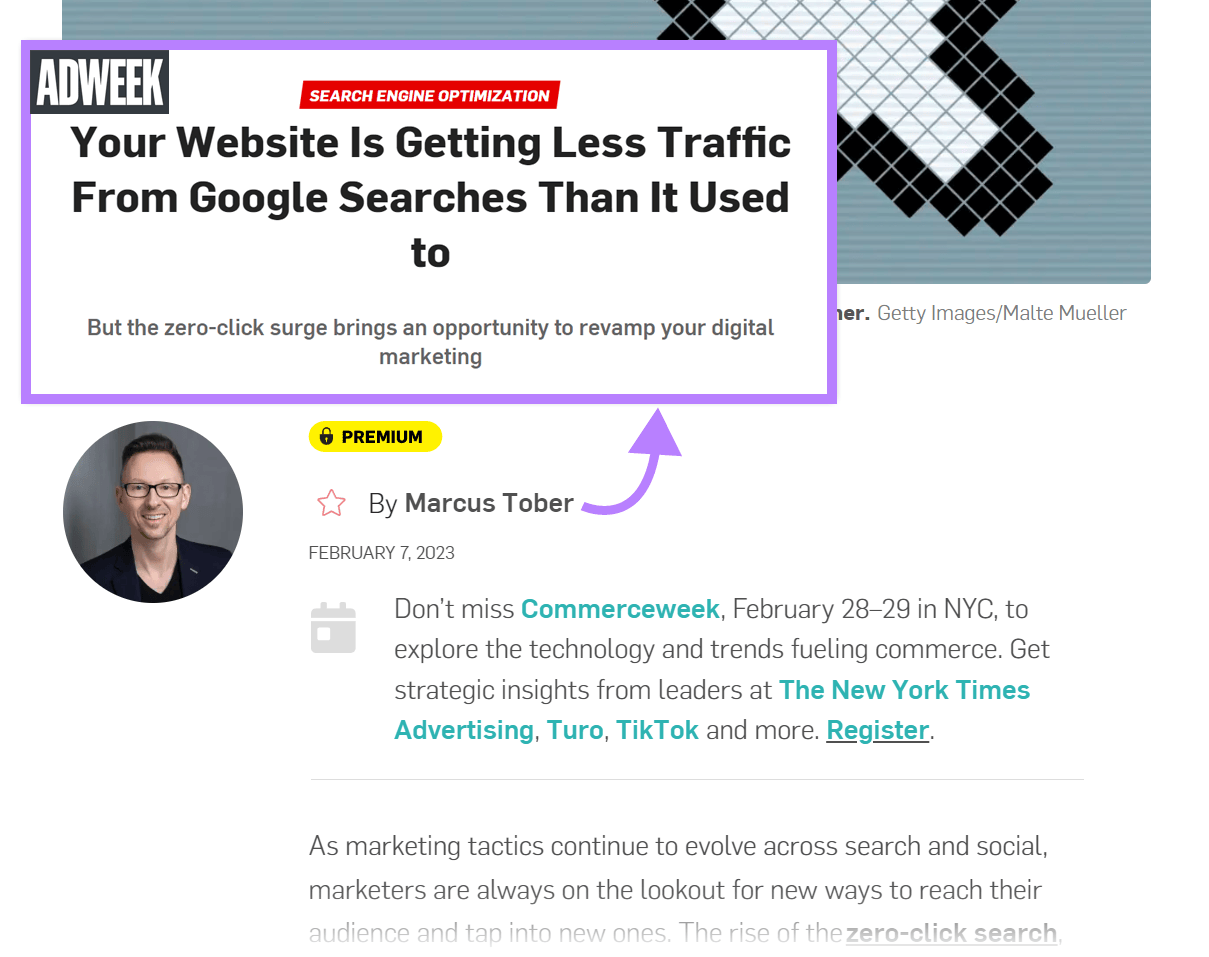
Social Media
Social media platforms allow for more engagement with your audience. Which helps you develop relationships.
Whether you choose detailed posts on LinkedIn, quick updates on X (previously known as Twitter), or something else will depend on which platform(s) your audience prefers.
No matter the platform, it’s best to include a variety of post types to keep your content fresh and engaging.
For example, Mailchimp posts a mix of promotional and educational content across platforms like Instagram.
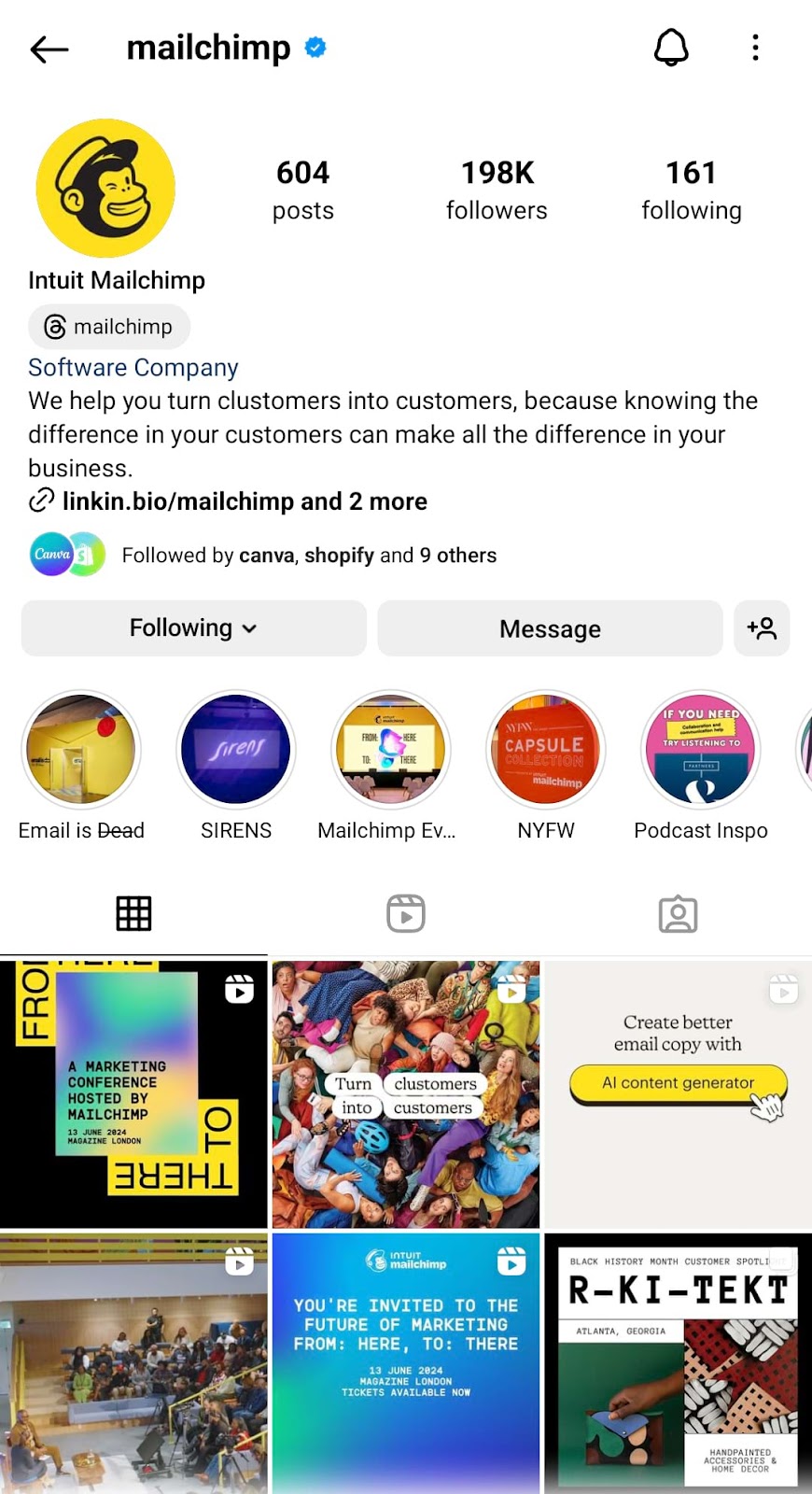
Webinars
Webinars are live or pre-recorded virtual events that can be used for in-depth discussions with experts, product demonstrations, and Q&As.
They’re often used as a type of gated content. Which can support lead generation.
For example, Blinkist holds live webinars that interested users need to sign up to attend:
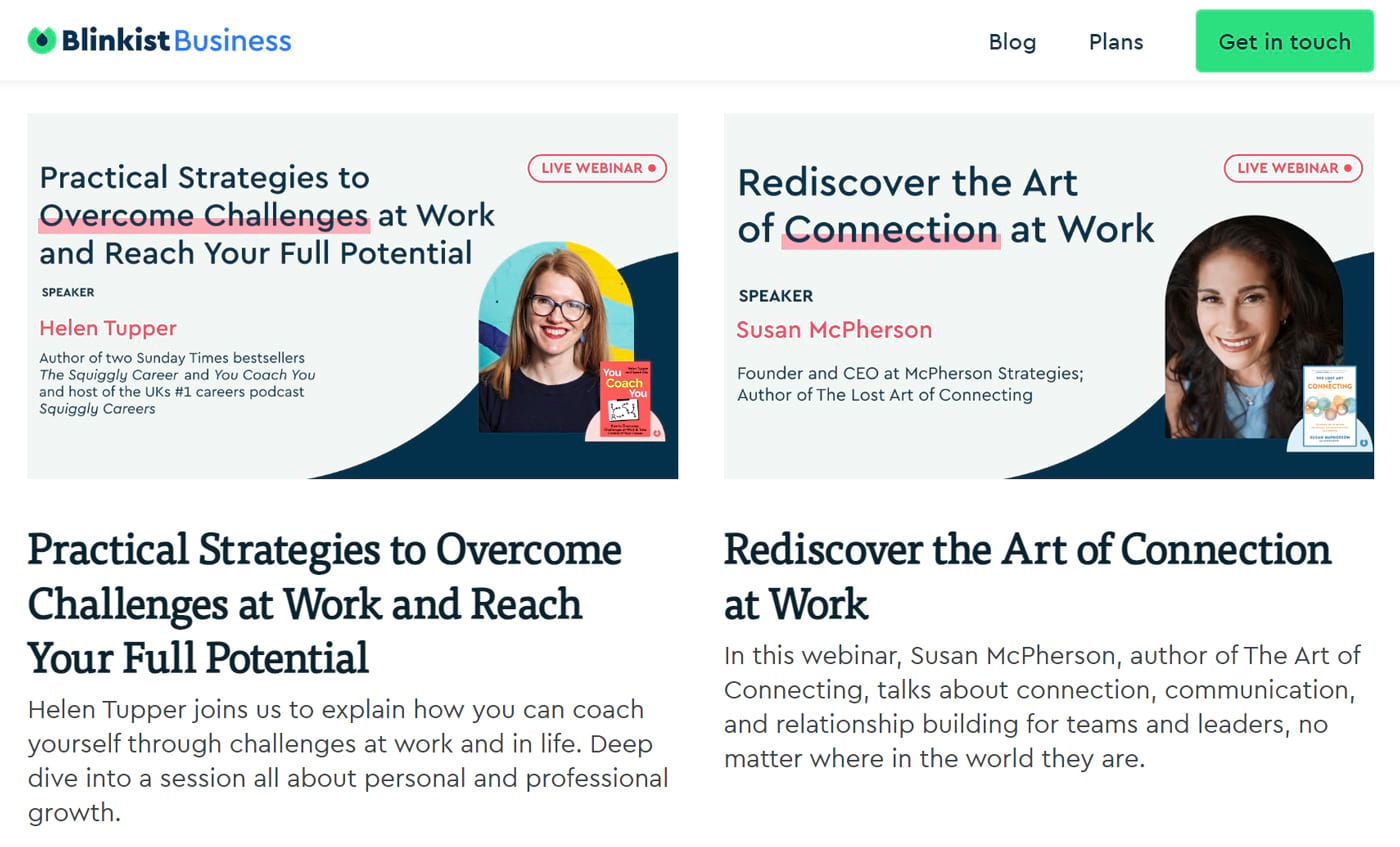
PR Activities
PR also uses various tactics to achieve its goals. Here are some of the most common activities an effective PR strategy uses:
Press Releases
Press releases are used to announce events, product launches, or company achievements with the media. To encourage press coverage that boosts brand awareness.
Here’s a template showing what they often look like:
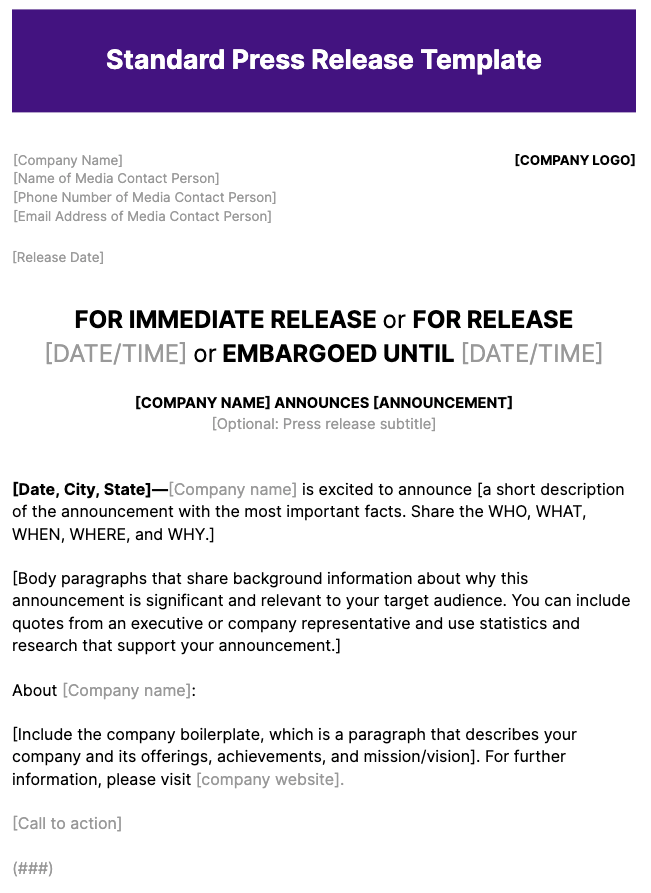
To give press releases as much visibility as possible, it’s usually best to publish them to your website and also distribute them via newswire services.
Media Outreach
Contacting members of the press directly to share press releases, provide early access to a report, or set up exclusive interviews increases the odds of securing coverage for your company.
When you see articles with a company CEO like this one featuring Siemens CEO Roland Busch, it’s usually the result of media outreach.
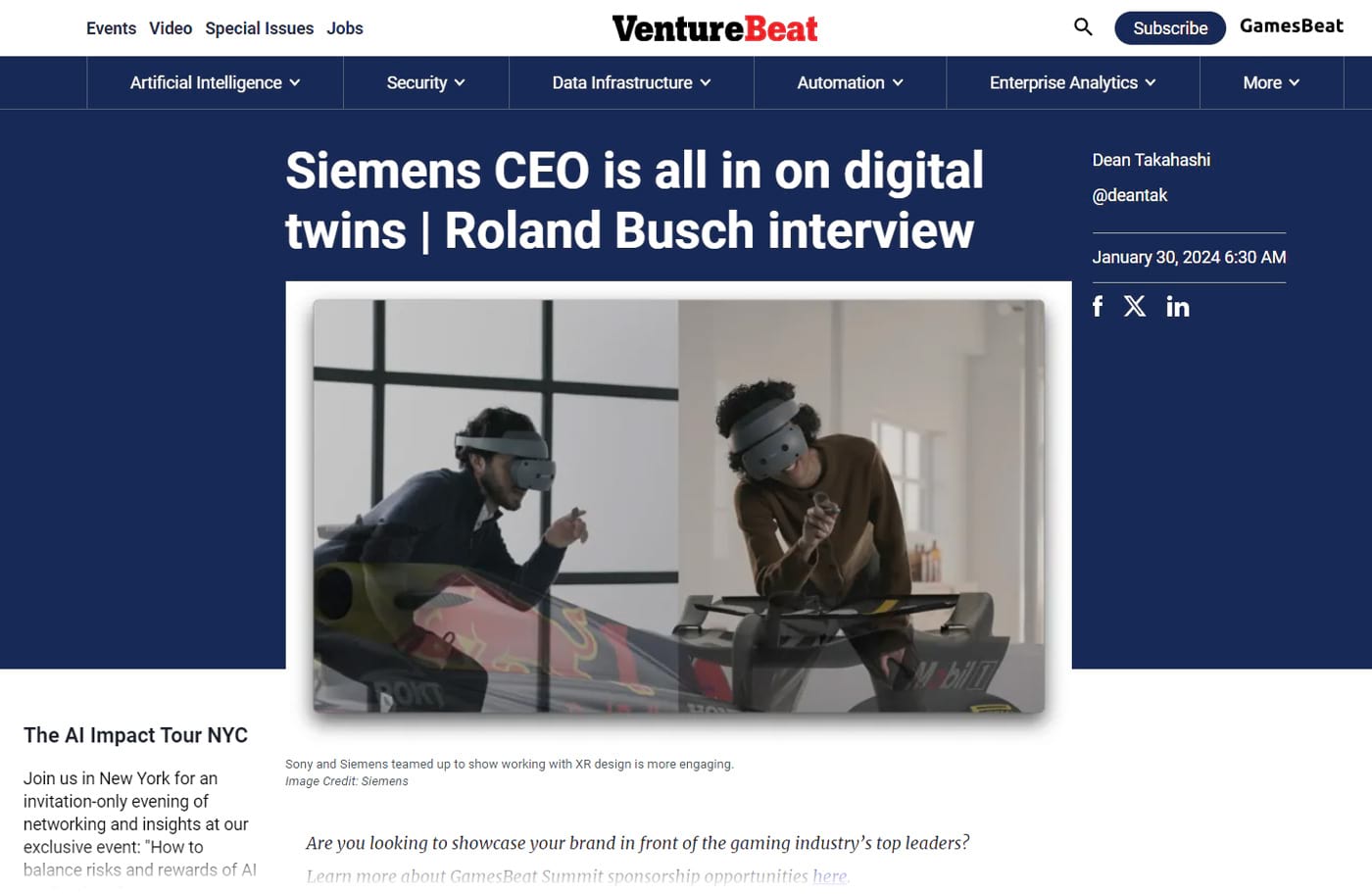
Sponsorships
Sponsorships let you publicly align your brand with causes your target audience cares about. Which can enhance brand visibility and help people connect with your company on a deeper level.
For instance, enterprise software company SAP has several sponsorship programs. Including for athletes.
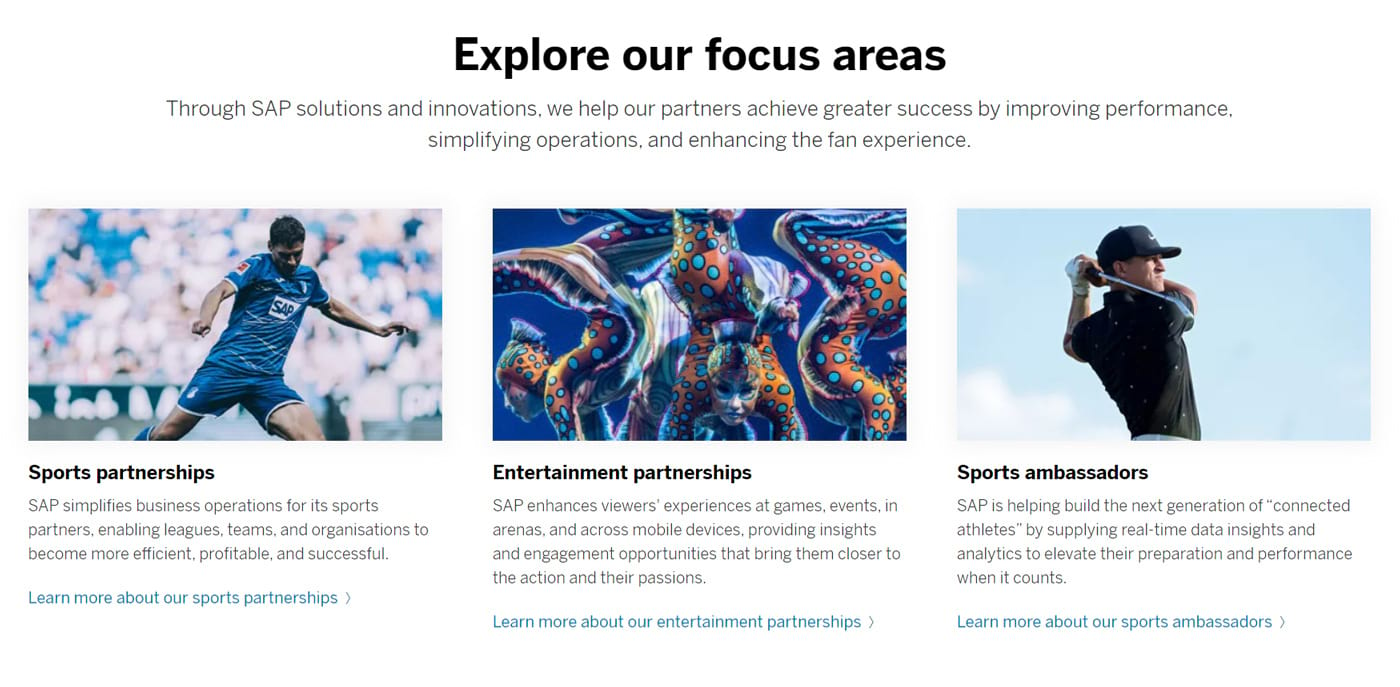
The key to sponsorships is to ensure that you’re supporting individuals and organizations that are relevant to you.
Public Speaking
Public speaking events (e.g., industry conferences or panel discussions) offer an opportunity to share your expertise, insights, and brand messages directly with an engaged audience.
For example, NVIDIA’s Jensen Huang gave a keynote address at a leadership conference in California’s Bay Area:
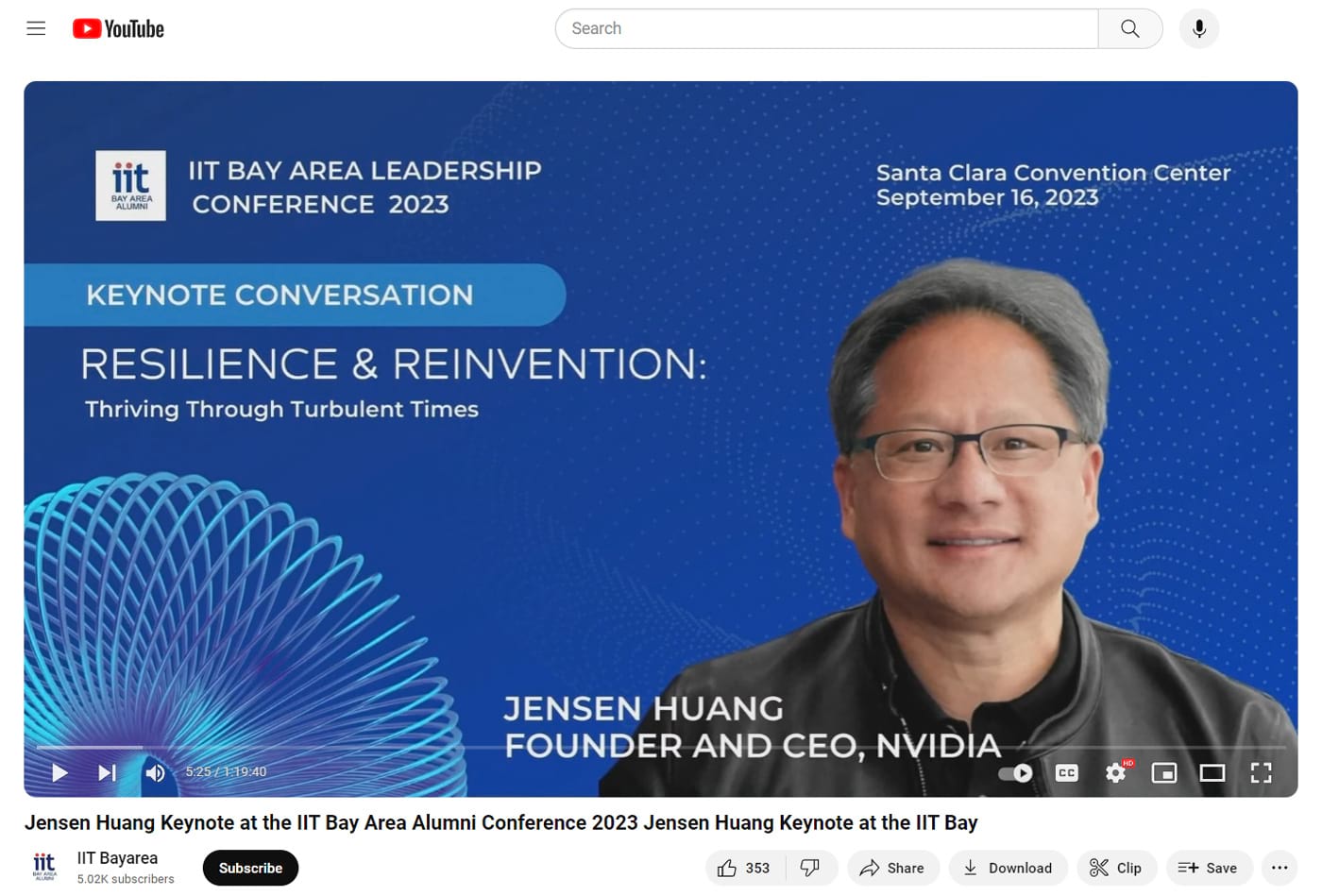
Industry Events
Taking part in relevant exhibitions, trade shows, and other events is a straightforward way to build brand awareness.
These PR activities provide opportunities for face-to-face interaction. Where you can answer questions and build relationships with potential partners, investors, and customers.
Community Initiatives
Partaking in corporate social responsibility (CSR) activities helps build a positive brand image. Which can enhance trust and loyalty with your audience.
This might involve participating in environmental projects or charity events. Which can resonate strongly with your audience by showing a shared dedication to positive change.
Brands like Oracle have comprehensive CSR policies and run initiatives in countries all around the world:
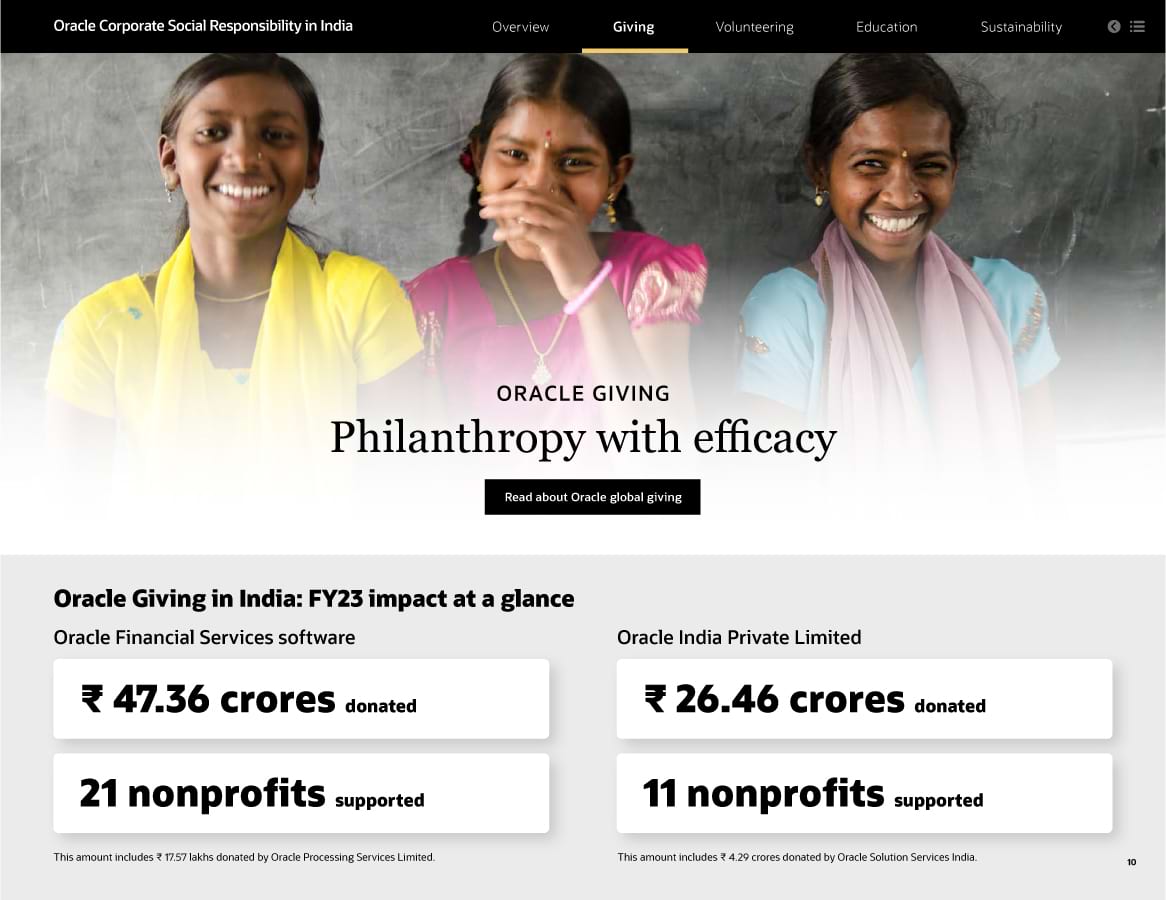
Content Marketing vs. PR: Metrics to Measure Success
Content Marketing Metrics
Measuring content marketing efforts allows you to figure out if you should keep doing what you’re doing. Or if you need to switch things up.
This ensures your content marketing efforts support your business goals.
Here are a few content marketing metrics you can track to measure success:
- Organic traffic: The number of visits that come to your site from organic search results
- Average engagement rate: The portion of people who interact with your social content relative to the number of followers you have
- Conversion rate: The rate of visitors who take a desired action (like making a purchase) our of all your visitors
- Leads generated: The number of leads generated through content marketing efforts
- Keyword rankings: The positions (how high up in search results) your content has in search results
- Backlinks: The number of links from other sites that direct to your site as a result of content marketing efforts
Use Semrush's Backlink Analytics to quickly evaluate your backlink profile.
Just go to the “Referring Domains” tab to find out which media outlets are linking your domain.
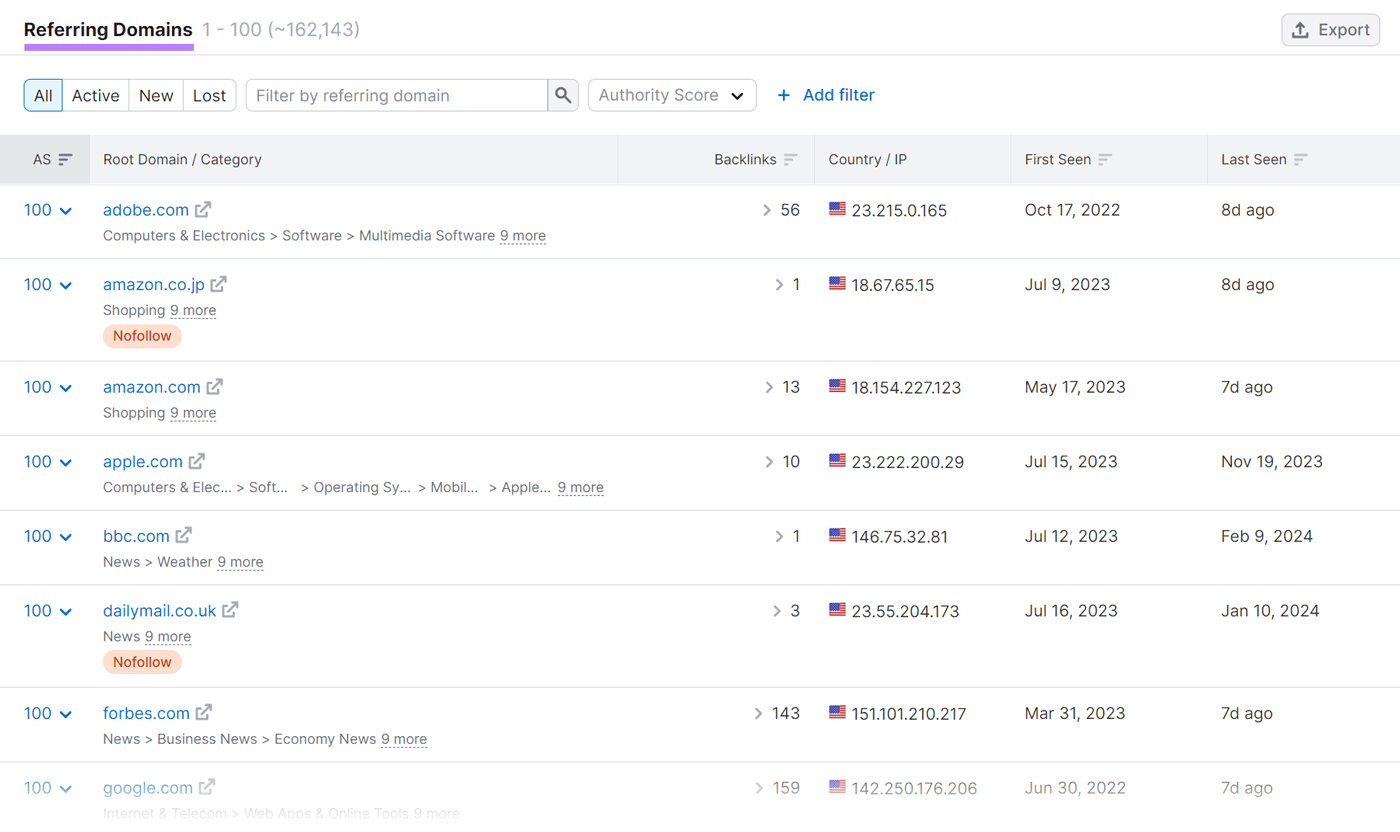
Pay particular attention to any that are labeled “Lost.” Those indicate domains that used to link to you but no longer do.
Consider creating link-worthy content and reaching out to those domains. To reclaim those lost backlinks and boost your SEO performance.
You can find some of these other metrics in Google Analytics.
PR Metrics
Measuring PR performance helps you understand whether your PR campaigns are having their intended impact. Which enables you to refine your strategy.
Here are a few metrics you should track to measure your PR success:
- Backlinks: The number of sites that link to your site as a result of PR efforts
- Referral traffic: Then number visits that come from other websites like media outlets
- Organic traffic: The number of visits that come from organic search results (these are often from search queries that include your brand name following media coverage)
- Social reach: The total number of people who see you social media content
- Brand mentions: The total number of times your brand is mentioned online (even if the mention doesn’t include a link)
- Brand sentiment: The overall public perception of your brand
Track brand mentions and sentiment with the Media Monitoring app.
Open the tool, enter your brand name in the “Keyword” field, and click "Create Project."
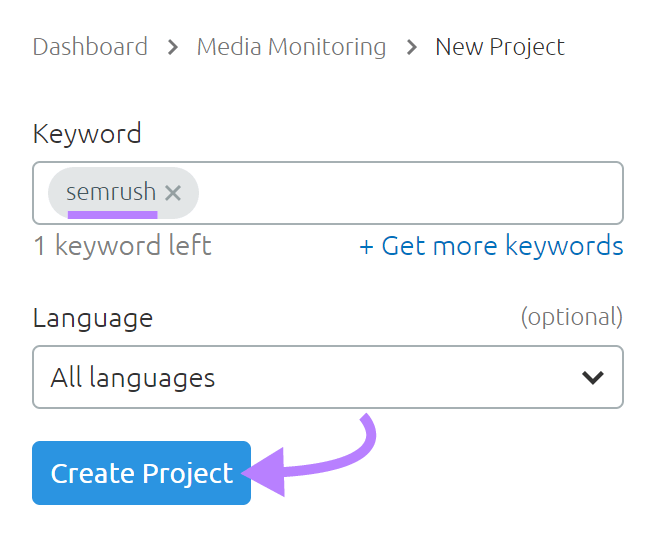
You’ll then see a dashboard with three tabs:
- Summary: Shows a high-level overview of your brand's online mentions
- Mentions: Shows the complete list of all your brand mentions
- Analysis: Provides detailed data related to your brand mentions
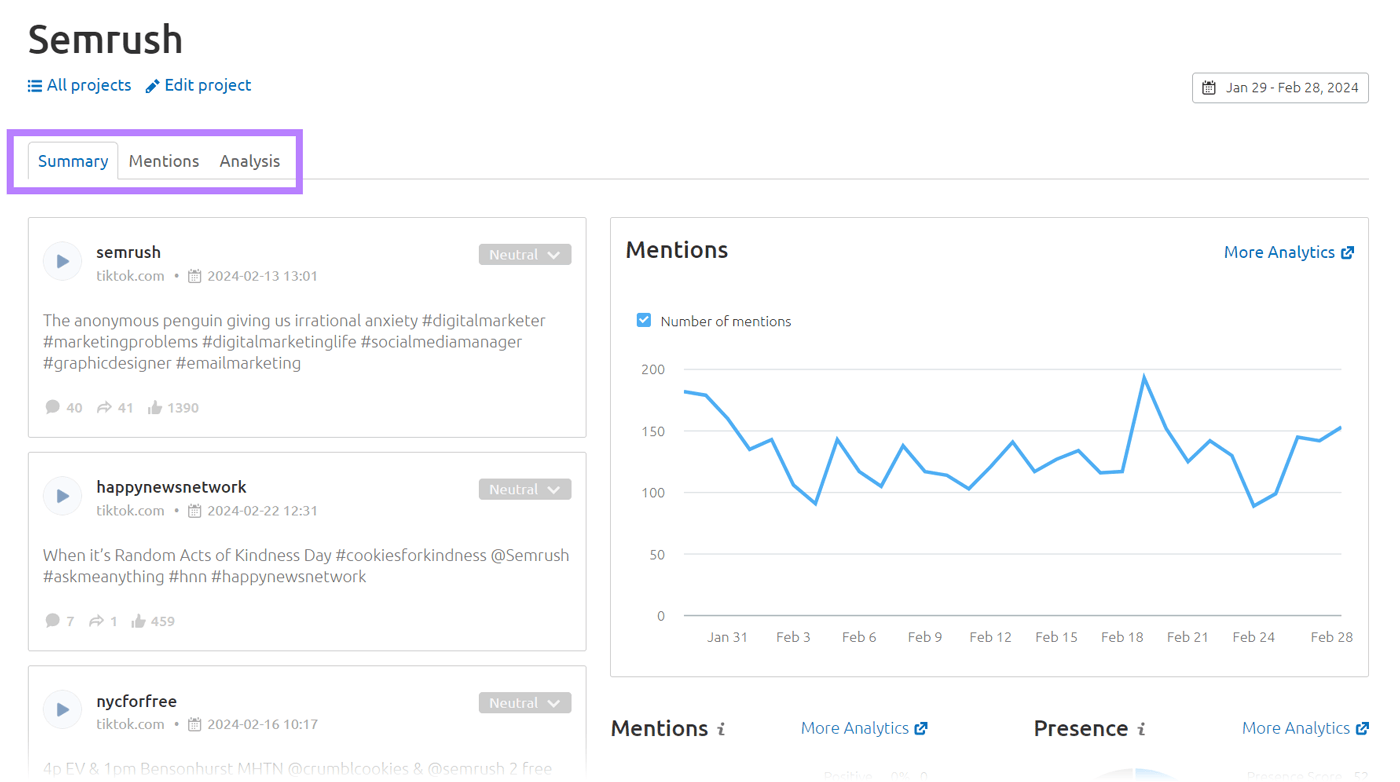
In the “Summary” tab, check out a sampling of the mentions you’ve received.
And scroll down to see the “Mentions” chart. Which shows a breakdown of your positive and negative mentions.
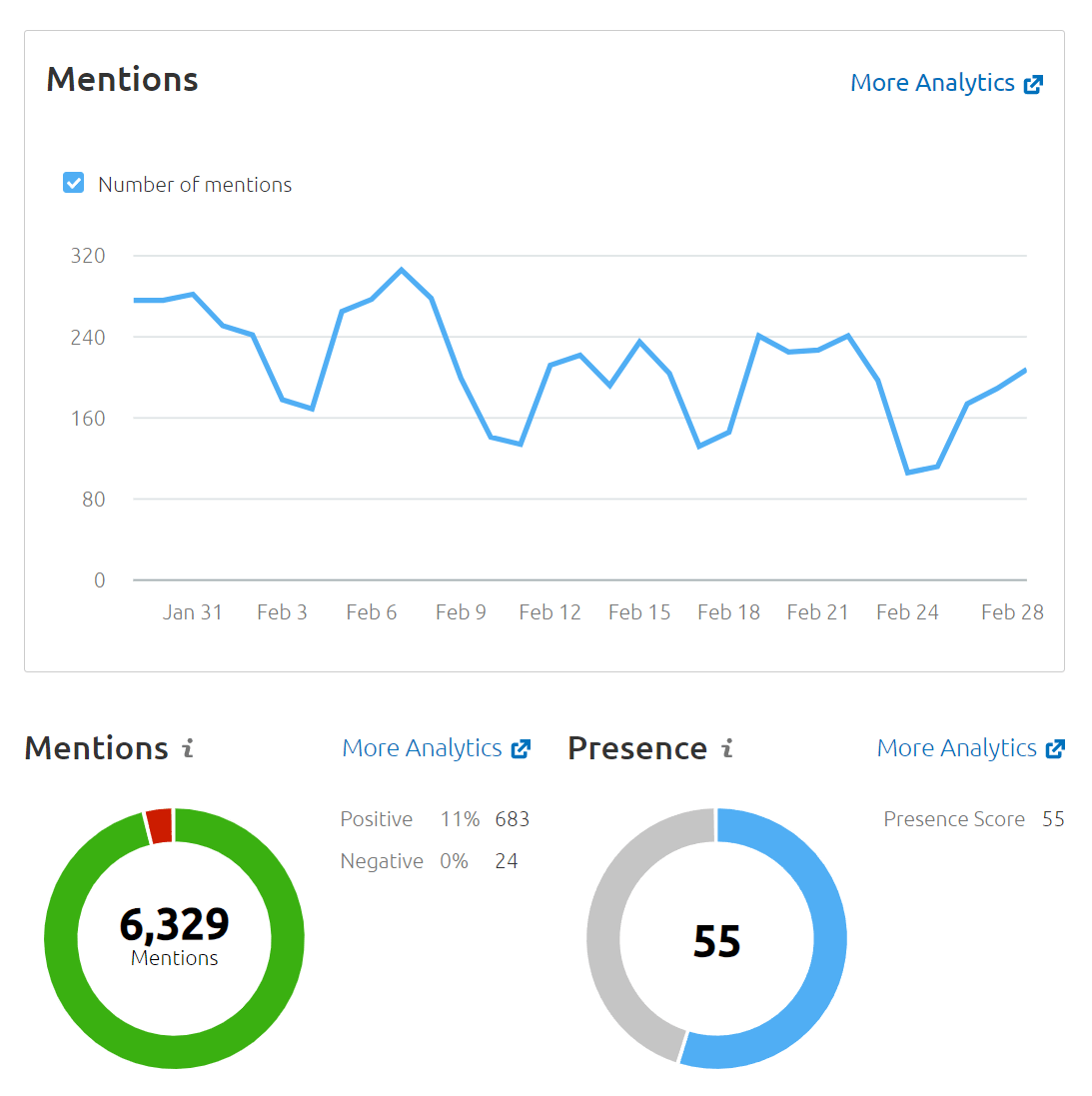
If you notice a high proportion of negative comments, it's a cue to investigate the issues being discussed. And consider a communication effort intended to shift public perception.
If the vast majority of mentions are positive, that’s a sign to continue your current PR activities.
Frequently Asked Questions About PR and Content Marketing
Which Is Better: PR or Content Marketing?
Both disciplines support larger business goals. So, neither is better than the other.
Ideally, you should use PR and content marketing together to increase your brand's visibility and credibility. And ensure you maintain a clear and uniform message everywhere.
How Can You Use PR and Content Marketing Together?
Here are some basic steps to take for using both PR and content marketing:
- Define common objectives: Align both strategies with a main goal to ensure cohesive efforts
- Develop a unified brand message: Create consistent messaging that reflects your brand’s values across all communications
- Create content that can be repurposed: Produce versatile content that can be adapted for multiple uses. For example, an infographic that can be added to your blog posts and distributed to influencers for social sharing.
- Leverage PR success in marketing content: Include media mentions as social proof in content marketing
What Tools Are Good for Both PR and Content Marketing?
A Semrush account includes over 55 tools that can be used for activities spanning both PR and content marketing. Like keyword research, content creation, social media planning, and more.
Project management tools like Asana and Trello also make it easier for PR and content marketing teams to collaborate and stay on the same page.
Combine PR and Content Marketing
Don't look at PR and content marketing in silos.
Pair them to achieve the best possible results.
How can you get started?
Try using Semrush's SEO Writing Assistant to create content for your content marketing and PR activities.
